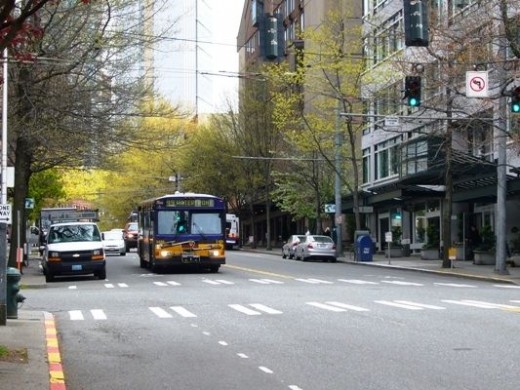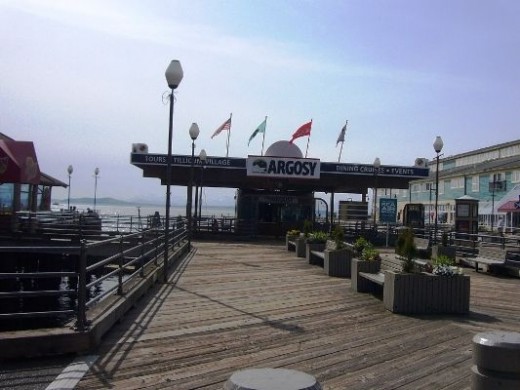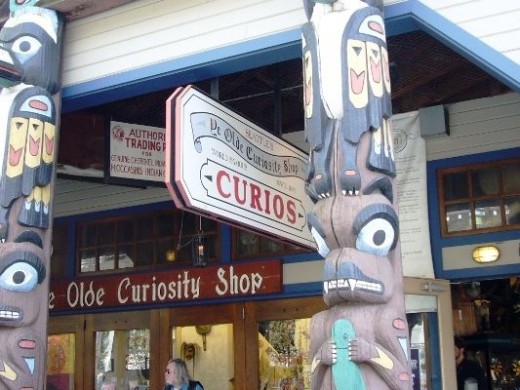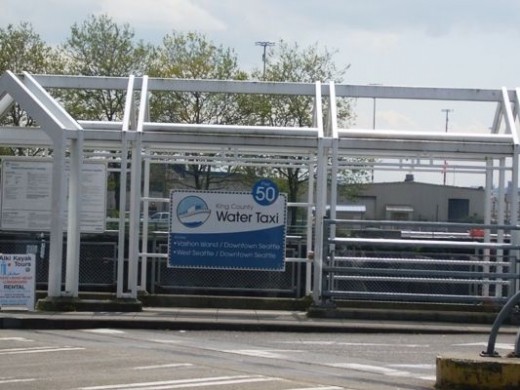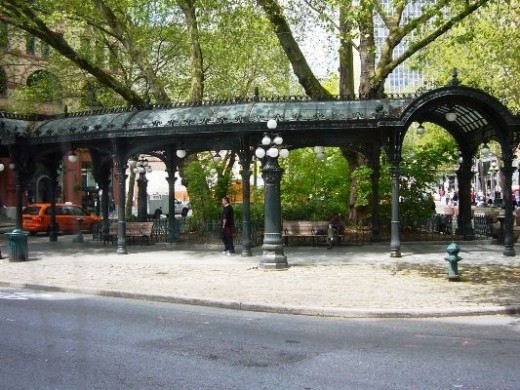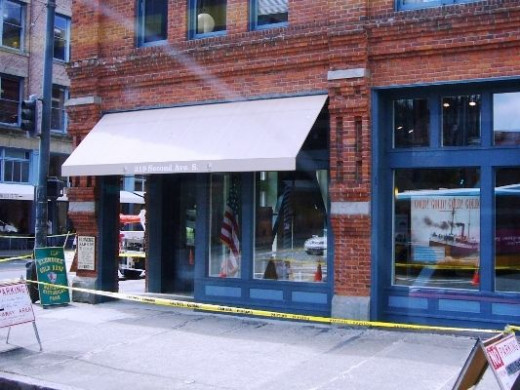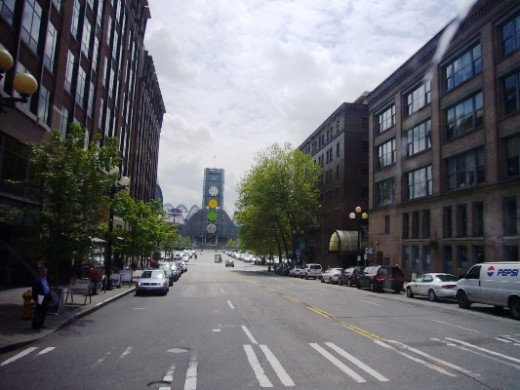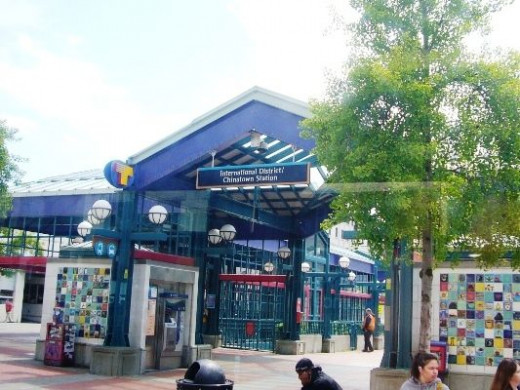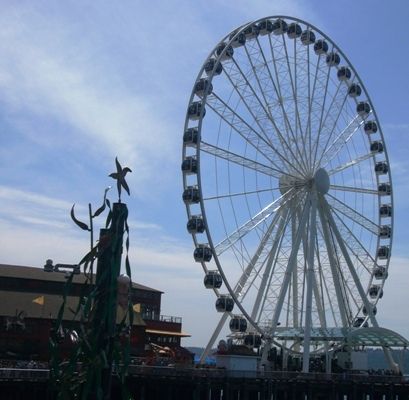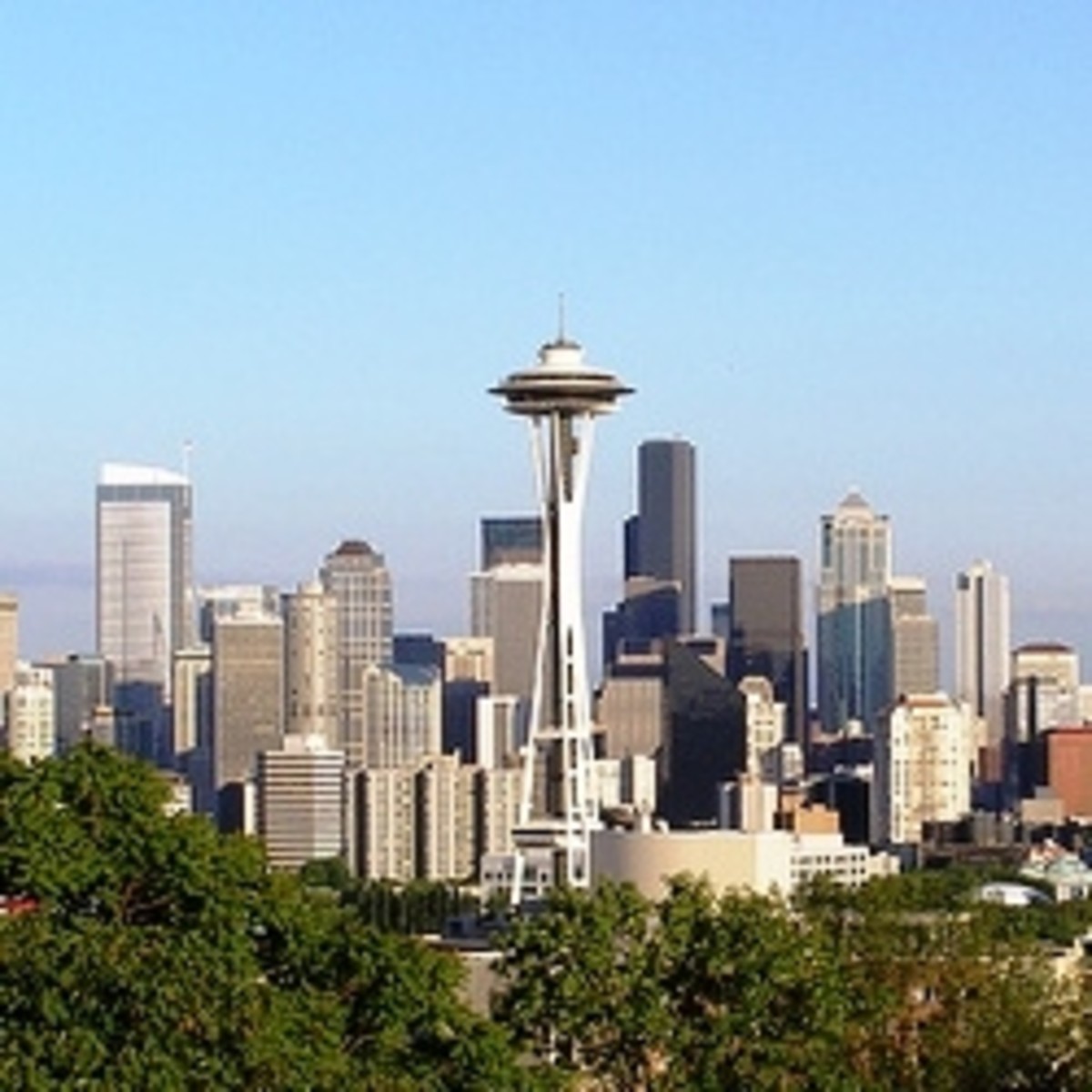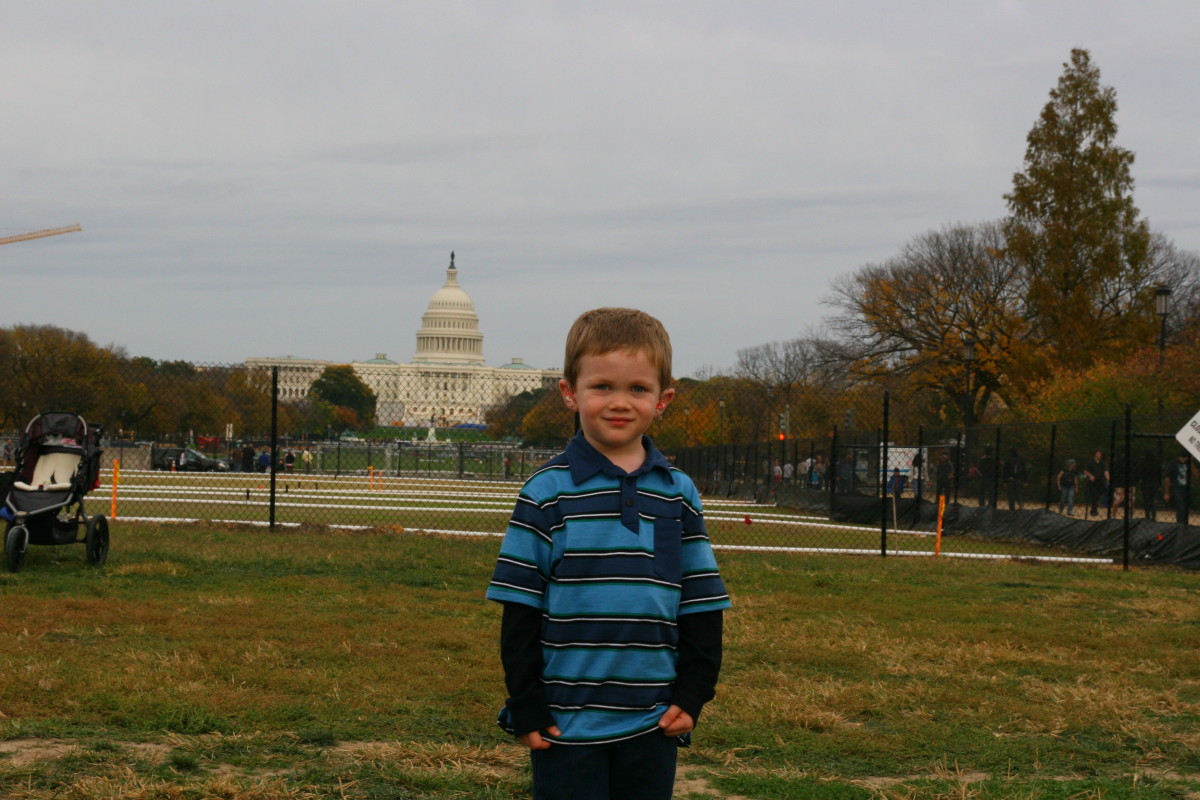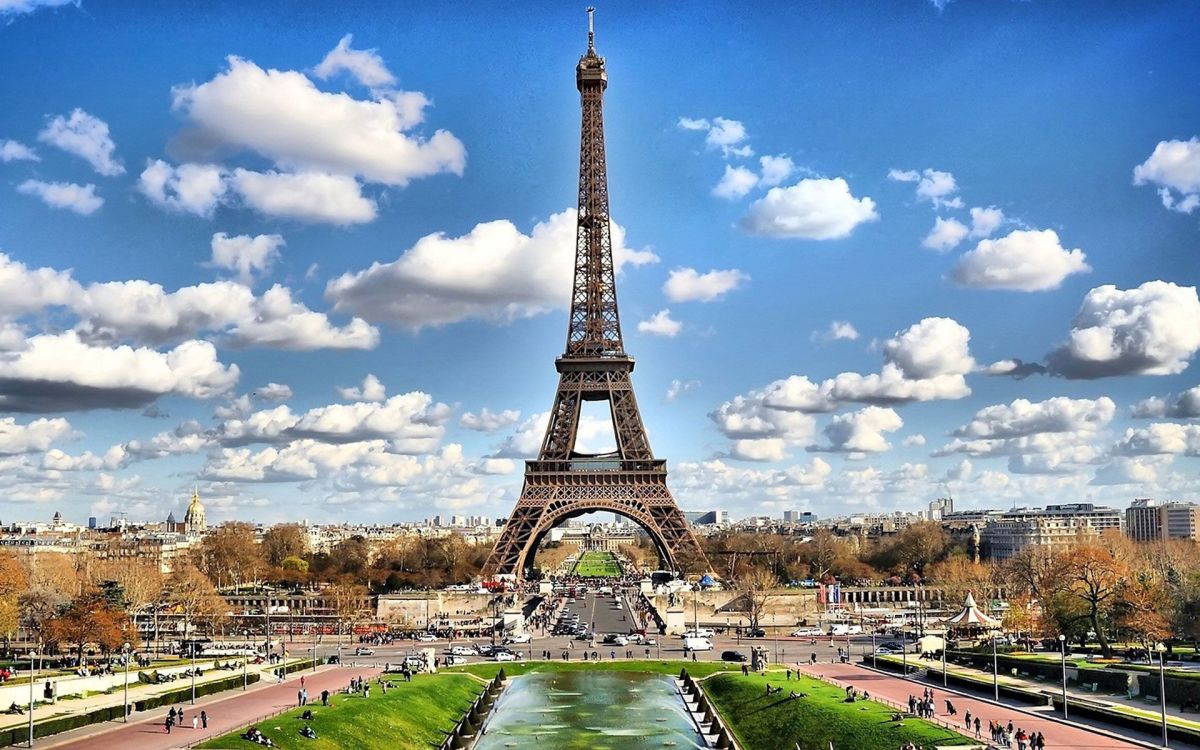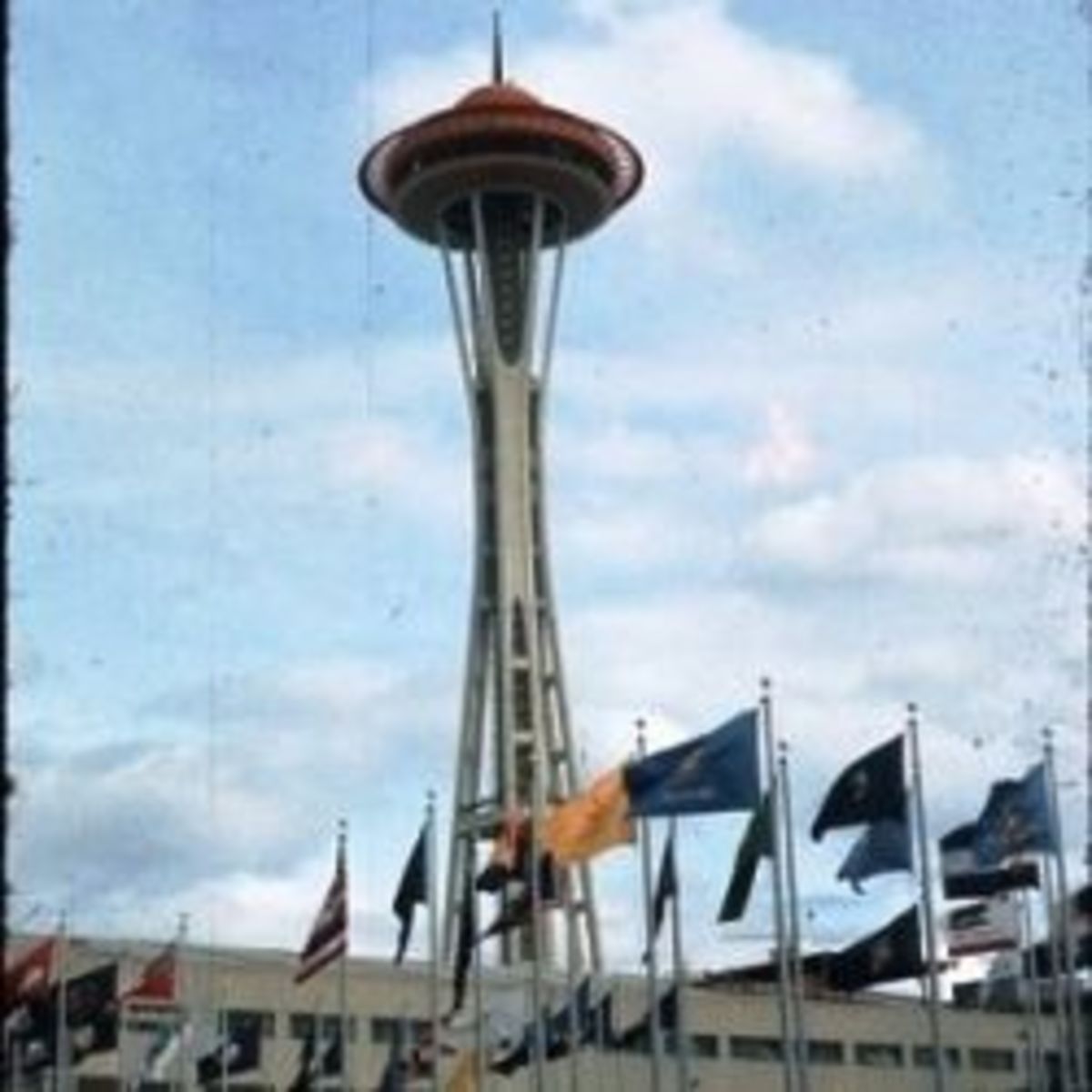- HubPages»
- Travel and Places»
- Visiting North America»
- United States»
- Washington
Remembering the Seattle Waterfront Trolley
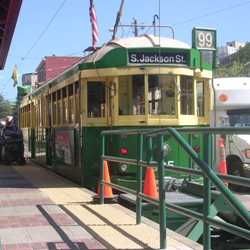
The Seattle Waterfront Trolley and the Metro #99 Waterfront Bus
The Seattle Waterfront Streetcar line began operation on May 29, 1982. It was officially called the Seattle Waterfront Streetcar, but many people referred to it as the Seattle Waterfront Trolley. For the first 8 years, the streetcars ran back and forth along a 1.6 mile set of tracks on the east side of Alaskan Way from Broad Street at the north end extending to Main Street at the south end. There were five stations spaced approximately four blocks apart where the trolleys stopped for passengers to board or or disembark. The line was extended four tenths of a mile in 1990 to reach the international district.
The Seattle Waterfront Trolley was a idea initiated by George Benson, who served as a Seattle City Council member for over 20 years. The waterfront trolley is currently mothballed and has been more or less replaced with the Metro Route #99 Bus. This is the story of the Seattle Waterfront Trolley, a fun and convenient mode of transportation along the Seattle Waterfront.
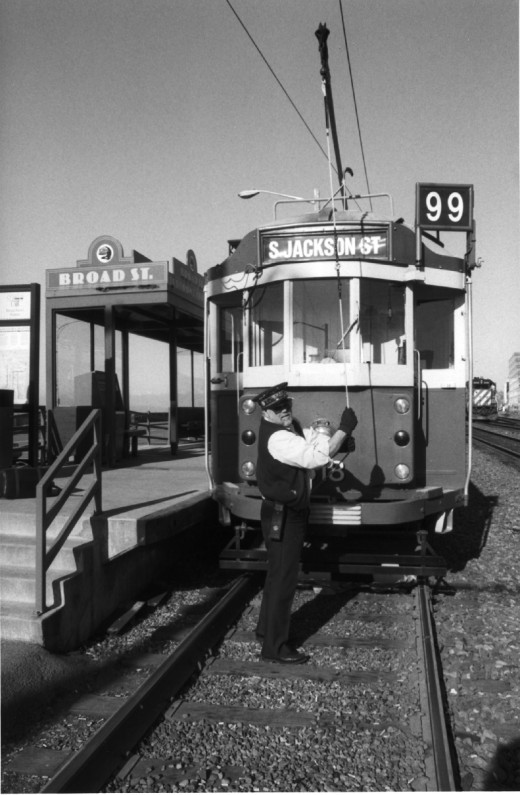
Seattle Waterfront Trolley or Benson's Folly?
The Story of the Seattle Waterfront Streetcar Line
The Seattle waterfront is a busy and popular place for both tourists and residents of the Seattle area. There are many businesses along the waterfront and people are attracted to the area to spend their leisure time watching the port activity, enjoying the views of Puget Sound, Olympic Mountains, and patronizing restaurants, shops, the Seattle Aquarium and the Washington State ferry terminal .
To enhance the appeal of the Seattle waterfront and to make transportation back and forth along the 1.5 mile length fun and easy, Seattle City Council member, George Benson dreamed of adding a streetcar line. There were numerous obstacles to overcome including engineering problems, funding issues and locating vintage streetcars that were still in operating condition and met current safety regulations. The budget for what initially seemed like a simple project ballooned from a few thousand dollars to an eventual cost of over ten million for the extended line. For many years, the plan for a Seattle Waterfront Trolley was called "Benson's Folly".
The proper permits were obtained, safety requirements met and funding issues resolved through the waterfront businesses agreeing to tax themselves to pay for the project. Five antique streetcars, originally built in the 1920s, were purchased from a company in Melbourne, Australia and shipped to Seattle. The Seattle Waterfront Streetcar finally began operation on May 29, 1982. It was the first streetcar to run again on Seattle streets since 1941.
A Sunny Winter Day on the Seattle Waterfront
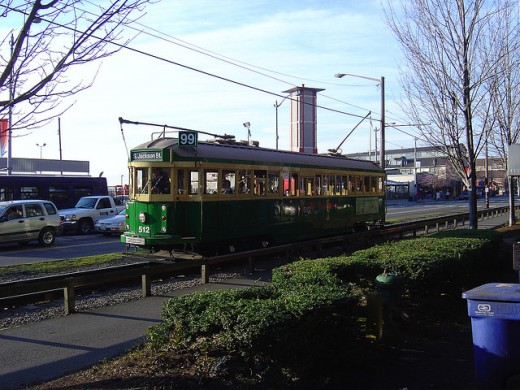
The Run of Seattle Waterfront Trolley
Seattle Waterfront Streetcar 1982-2005
When the Seattle Waterfront Trolley began operation in 1982 it was owned and operated by the city of Seattle. It was very popular with both residents and visitors to Seattle, carrying as many as 400,000 riders a year. The Seattle Waterfront Streetcar became part of the King County Metro Transit System when the City of Seattle sold it to Metro Transit in 1985. In 1990 it was decided to extend the line four tenths of a mile to reach the international district and provide easy access to the International District entrance of the newly opened Metro Bus Tunnel. The short expansion of the line cost almost twice as much as the original 1.6 mile route. Although a small fare was charged and the streetcars were popular, they were not profitable. Financial support was required from Metro to keep them operating.
A Ride on the Seattle Waterfront Trolley from the Waterfront to the International District in 1997
A Return Trip from the International District to the Waterfront on the Seattle Waterfront Streetcar in 1997
George Benson
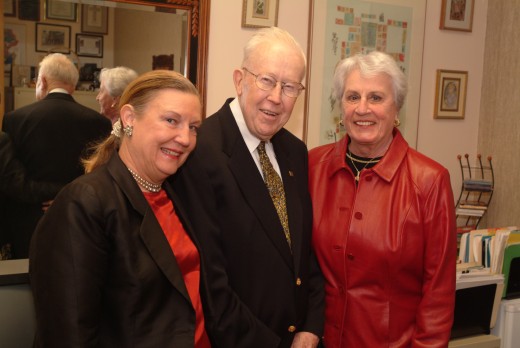
George Benson 1919-2004
The Father of the Seattle Waterfront Trolley
George Benson was born January 10, 1919, in Minneapolis, Minnesota to a family with Swedish ancestry. From a young age George used the streetcars in Minneapolis to get around, planting the seeds of his lifelong interest in that mode of transportation.
George moved to Seattle in 1938, earned a pharmacy degree from the University of Washington and became the owner of Mission Pharmacy in the Capitol Hill neighborhood of Seattle.
In 1968, George became involved with the local Capitol Hill Community Council in response to the increased violence and unrest that was occurring in the neighborhood at that time. As a representative of the community he found himself spending a lot of time at city hall attending meetings and hearings and decided to run for the Seattle City Council. He was unsuccessful in his first city council campaign in 1971, but ran again and was elected in 1973.
In 1974, George started promoting the idea of adding a streetcar to the Seattle Waterfront. It took eight years for the dream to become a reality. In 1978 George and his wife, Evelyn personally traveled to Melbourne, Australia at their own expense to select the five 1920s wooden streetcars that became Seattle's waterfront trolleys. They also brought spare parts back to Seattle to keep the the trolleys running for years. After the trolleys arrived in Seattle, George spent his weekends painting the trolleys himself before they were put into service.
George Benson was overwhelmingly re-elected to the Seattle City Council at every election until he decided to retire in 1993. He was a strong advocate for other forms of public transportation in Seattle and his support for the Seattle Monorail was instrumental in its preservation when demolishing it was being considered.
In 1994 George and Evelyn retired from their business as well, closing the Mission Pharmacy. Evelyn Benson passed away in 2002. A few months later, on June 1, 2002, the Seattle Waterfront Streetcar celebrated its 20th anniversary and was officially named the George Benson Waterfront Streetcar Line to honor George Benson. Seattle lost a respected and beloved resident when George Benson passed away on October 22, 2004.
The End of the Waterfront Trolley
In 2005 more problems arose for the Seattle Waterfront Trolley. The streetcar maintenance facility was located at the proposed site of the Seattle Olympic Sculpture Park, and the land was needed for the park. As a result the "trolley barn" was scheduled for demolition and the Seattle Waterfront Trolley "temporarily" suspended operation on November 18, 2005. Several sites for a new maintenance building were proposed, but a consensus was never reached on where to build it.
Another reason for ending the trolley service was the 2001 Nisqually Earthquake. The Nisqually Earthquake registered 6.8 on the Richter Scale and caused damage to the old, seismically-challenged Alaskan Way Viaduct. The viaduct is an elevated highway which looms over a portion of the waterfront trolley tracks. The Alaskan Way Viaduct was deemed unsafe in the event of another major earthquake and is currently in the process of being demolished to be replaced with a tunnel. The city and county determined that it would be unsafe to operate the trolley during the demolition of the viaduct and subsequent tunnel construction. The tunnel project is not scheduled for completion until at least 2018.
Ironically, in 2007, two years after the trolley stopped running, the Seattle Waterfront Streetcar was named by the National Geographic Society as one of the 10 Great Streetcar Routes.
Will the Trolleys Return to the Seattle Waterfront?
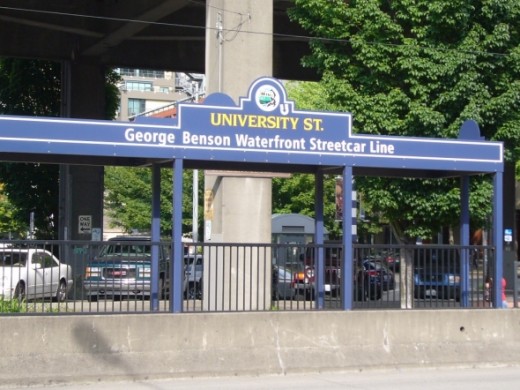
Where are the Waterfront Streetcars?
Most of the trolley tracks and eight of the nine streetcar stations are still in place. Despite rumors that the streetcars were sold on eBay, Metro has announced that the trolley cars have been shrink-wrapped and are being carefully stored at the Metro Transit storage facility. Unfortunately, with budget cuts and other transportation priorities the ultimate fate of the Seattle Waterfront Trolley is unclear. Without a tireless advocate like George Benson in the city council to support it, no one knows if the Seattle Waterfront Trolley will ever return.
Metro Route 99 at the Stop at the North End of the Seattle Waterfront
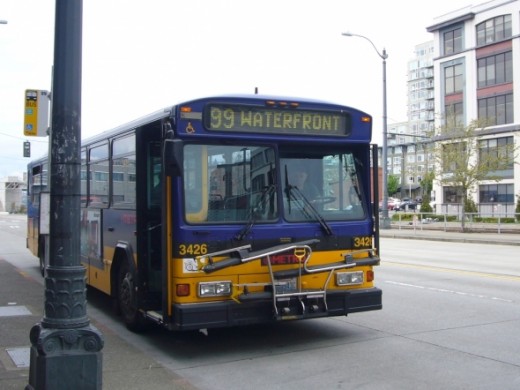
The Seattle Waterfront Bus Replaces the Trolley
The waterfront area that was once served by the Seattle waterfront trolley is now more or less covered by Metro Bus Route #99. The route number is 99 to honor the route number used by the waterfront trolley. Initially the buses were wrapped to look like a trolley and they ran a route almost identical to the streetcars, running both north and south along Alaskan Way.
The #99 Metro bus is no longer painted or wrapped to look like a trolley and currently looks like any other Metro Transit bus. The route has been changed and now the bus runs above the waterfront primarily along First Avenue and only runs along Alaskan Way for a few blocks. It still makes a loop through the international district. The bus doesn't have the charm of the antique streetcars and the route is different, but it is a great route for getting around between some of Seattle's most popular attractions.
A Trip on Metro Route #99 - A Tour of Seattle on the Waterfront Bus - all photos by Vicki Green - PNW Travels
Click thumbnail to view full-size









The Victoria Clipper Departs from Pier 69
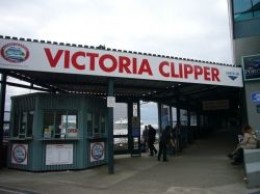
Board the Victoria Clipper for a Trip to Victoria or San Juan Island
Pier 69 is on the route of the #99 Waterfront bus making it an easy way to get to the dock where the Victoria Clipper lands. The Victoria Clipper is the fastest way to get from Seattle to Victoria, British Columbia or from Seattle to San Juan Island.
Seattle Waterfront Bus Route #99 Map
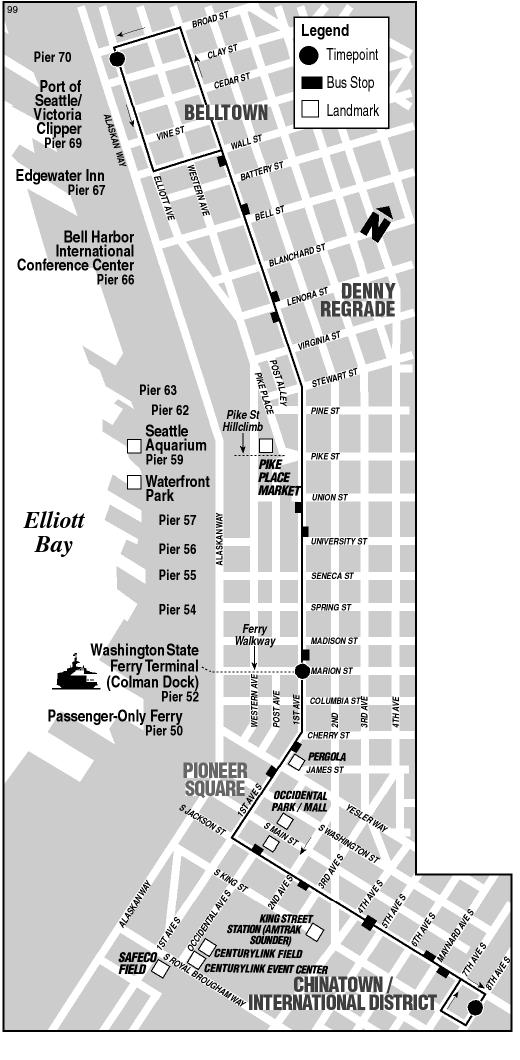
Links to the Seattle's Metro #99 Waterfront Bus Schedule
- Metro Route 99 Timetable, Weekday
Metro Route 99 Timetable, Weekday - Metro Route 99 Timetable, Saturday
Metro Route 99 Timetable, Saturday - Metro Route 99 Timetable, Sunday
Metro Route 99 Timetable, Sunday
Which Would You Choose - Trolley or Bus?
Would you rather ride the waterfront trolley or the bus?
More Information About the Seattle Waterfront Trolley and Route 99 Bus - Links to Websites with more information
- HistoryLink.org- the Free Online Encyclopedia of Washington State History
History Link Encyclopedia of Washington State History - Biography of George Benson. - Waterfront Streetcar now "The Benson Line"
Waterfront Streetcar now The Benson Line - Save Our Streetcar (Again)
Save Our Streetcar (Again) Bring Back the George Benson Waterfront Streetcar Line in Seattle! Contact Elected Officials Sign the Petition Join the Facebook Group Bring It Back! Save the Seattle Waterfront Streetcar!
The Seattle Waterfront Marriott Hotel
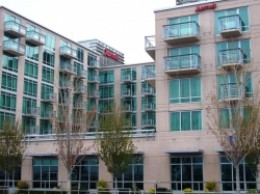
A Hotel on the Seattle Waterfront
The Marriott Waterfront Hotel
There are really only two hotels that are located right on the Seattle Waterfront. The The Marriott Waterfront is right across the street from the Waterfront.
Read reviews and ratings about the Marriott Waterfront Hotel in Seattle
The Edgewater Hotel on the Waterfront in Seattle
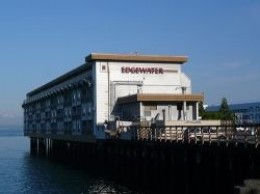
The Seattle Edgewater Hotel
Fish from your Room at the Edgewater Hotel
The Edgewater Hotel is the other hotel on the Seattle waterfront. It is actually on a pier over the water of Elliot Bay and one of their advertising slogans was that you could fish from your room. Over the years the Edgewater has had many famous guests including the Beatles.
Read what other travelers have to say about The Edgewater Hotel in Seattle
© 2011 Vicki Green

